
The world’s attention is fixed on Washington today as President Donald Trump is expected to unleash a sweeping set of reciprocal tariffs under what he has dubbed “Liberation Day.” If markets were hoping for clarity, they’re getting brinkmanship instead. The expected policy shift marks a sharp turn in global trade posture, and its implications are rippling through asset classes with increasing urgency.
The proposed20-25% reciprocal tariffs would hit a swath of critical imports: foreign automobiles, EU agricultural goods, and pharmaceutical products among them. If executed as planned, they are designed not only to penalize trade partners, but also to provoke a response. The gambit borrows heavily from the “shock-and-negotiate” tactics seen during Trump’s previous term—heavy-handed opening salvos aimed at creating leverage at the bargaining table.
Markets have begun pricing in this risk, but only to a degree. Gold is trading above $3,100/oz, a historic high, underscoring trader demand for inflation hedges and safe-haven assets amid global tremors. The S&P 500 has lost 3% from its recent highs, while the Nasdaq has shed 5%. The retreat in equities is broad but concentrated in areas most vulnerable to trade disruptions: manufacturing, industrials, and international tech firms.
Equities Market
European equities have responded even more acutely. Germany’s DAX is under heavy pressure, with markets already anticipating punitive duties on its automotive sector—long the engine of European export strength. The euro has softened modestly, and the EURUSD pair is under close watch for bullish reversals near 1.0695 and 1.0610. Sterling, too, trades cautiously, with bullish price zones at 1.2820 and 1.2780 as traders await clarity on whether the UK will be granted an exemption or must negotiate its way out of the tariff regime post hoc.
Currency markets are showing classic pre-crisis alignment. The U.S. dollar is weakening against traditional safe-havens like the Swiss franc and Japanese yen, even as it firms up against regional partners more exposed to the tariff crossfire. The Canadian dollar and Mexican peso are already sliding—clear signals of where the administration’s aim is most direct. U.S. bond yields are reflecting deepening anxiety about the economic impact. The 10-year Treasury yield has fallen to 4.108%, a multi-month low, as traders shift toward safety and begin questioning the Federal Reserve’s margin for maneuver.
Economic data continues to paint a fragile picture. The ISM Manufacturing PMI slipped to 49.6, suggesting contraction, while JOLTS job openings remain nearly flat at 7.73 million. These numbers aren’t disastrous, but they confirm a softening trend. Friday’s upcoming Non-Farm Payrolls report is expected to show just 139,000 new jobs—down from 151,000—with unemployment steady at 4.10%. These indicators imply that the labor market is cooling just as tariffs threaten to push prices higher again. That stagflation risk is exactly what keeps the Federal Reserve in a box: inflation isn’t low enough to ease aggressively, and growth isn’t strong enough to tighten further.
This backdrop raises two stark scenarios. If Trump launches aggressive tariffs with limited exemptions, expect equities to slide deeper. The S&P 500 could retest the 5,100 level. Markets would likely accelerate their retreat from risk, volatility would spike, and foreign governments would respond with retaliatory duties. That would compress global growth forecasts, choke supply chains, and destabilize trade-sensitive sectors. Gold could climb toward $3,215, while the dollar weakens further, especially if confidence in U.S. leadership erodes.
A more tempered rollout—say, moderate tariffs with broad carve-outs or immediate overtures toward negotiation—could trigger a snapback rally. Equities would rebound from oversold levels, bond yields might stabilize, and the dollar could regain some ground. In this scenario, risk sentiment hinges less on fundamentals and more on psychology: whether traders believe today marks a new policy direction or just another Trumpian power move designed for the cameras.
Key Movements This Week
We’ve heard the rhetoric and seen the reaction, but it’s time to focus on where the market might go from here. By anchoring ourselves in technical analysis, we gain perspective amid the noise. Let’s step into the charts and examine the levels that could define the next few sessions, starting with this week’s price movements across key assets.
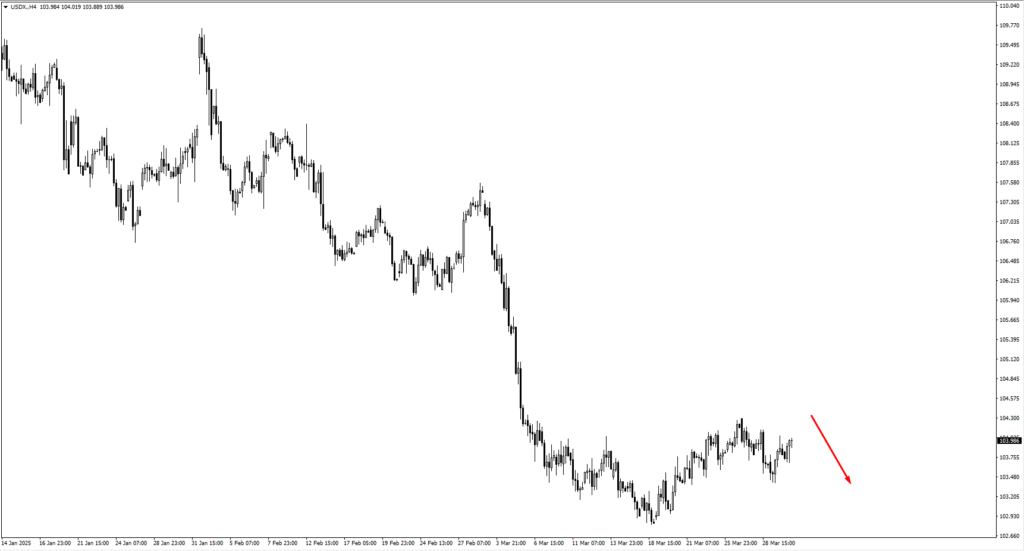
The U.S. Dollar Index (USDX) has entered a holding pattern ahead of the tariff release, trading in a tight range while sentiment hangs in the balance. Price action shows sellers preparing to re-enter around 104.90 and again at 105.60, while bulls may be waiting for a flush toward the 102.20 zone to step in. We’re watching those boundaries closely—if the dollar slips below 103.50 post-announcement, that could signal deteriorating confidence in the U.S. trade outlook.
EURUSD continues to exhibit strength, supported by haven demand away from the dollar and a more stable ECB tone. The pair looks constructive on dips, with bullish reaction zones forming around 1.0695 and deeper near 1.0610. A sustained move higher above 1.0800 could put 1.0920 back into focus. For now, price is consolidating, but a dovish market response to U.S. tariffs may push the euro higher in the near term.
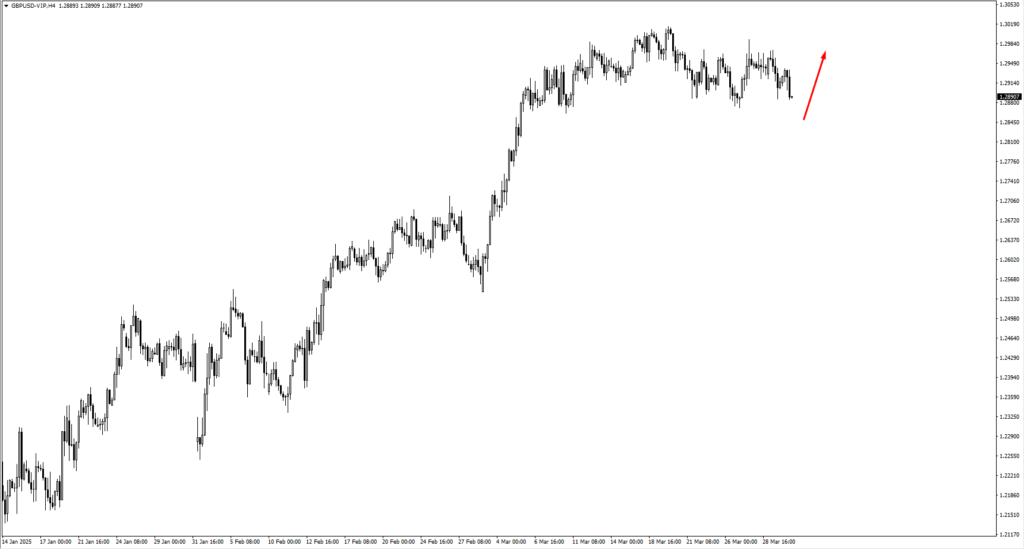
GBPUSD is showing a similar structure. The pair is bid on weakness, with accumulation interest appearing around 1.2820, 1.2780, and 1.2720. Despite uncertainty around the UK’s inclusion in Trump’s trade sweep, the pound remains resilient—possibly reflecting expectations of late-stage exemptions. A break above 1.2930 would confirm bullish continuation, but we’re prepared for reactive whipsaws should the UK be singled out tonight.
USDJPY has retreated as risk-off flows return, though it failed to test the key 151.65 level from the prior week. If price rebounds post-announcement, we’ll be watching for sellers around 149.80 and 150.70. Any deeper downside—particularly below 147.80—could confirm that risk aversion is intensifying, and that dollar strength is faltering under pressure from equity outflows and bond rallying.
USDCHF remains compressed in a consolidation zone, but the setup favors a bearish reaction if price pushes into the 0.8900 level. That area could act as a supply pocket if traders rotate into the franc on trade war escalation. We remain flexible, but our bias leans short if safe-haven momentum builds.
AUDUSD is lifting off a reaction zone at 0.6225 and now approaches a test near 0.6280. If bullish price action holds, this could mark the start of a short-term recovery. However, if price instead dips below 0.6186, we’ll look for buy signals again—especially if iron ore and commodities catch a bid post-announcement.
NZDUSD is playing out similarly, bouncing from 0.5650 and approaching a watch zone at 0.5710. With New Zealand’s exposure to global trade routes, this pair remains highly sensitive to risk sentiment. We’re positioned with caution and prefer to trade this pair reactively.
USDCAD remains volatile, reflecting crosswinds from oil strength and trade policy uncertainty. The pair hasn’t broken from its broader range yet, and we’re waiting for a clear close beyond support or resistance before committing to direction. A move above 1.3610 or below 1.3430 could tip the balance.

Crude oil (USOIL) is climbing higher, extending through the 71.00 level with momentum. If prices continue upward, we’re watching 73.40 and 74.40 as potential supply areas. However, a sudden shift in demand expectations tied to global retaliation could cool this rally quickly. We remain tactically bullish, but hedged.
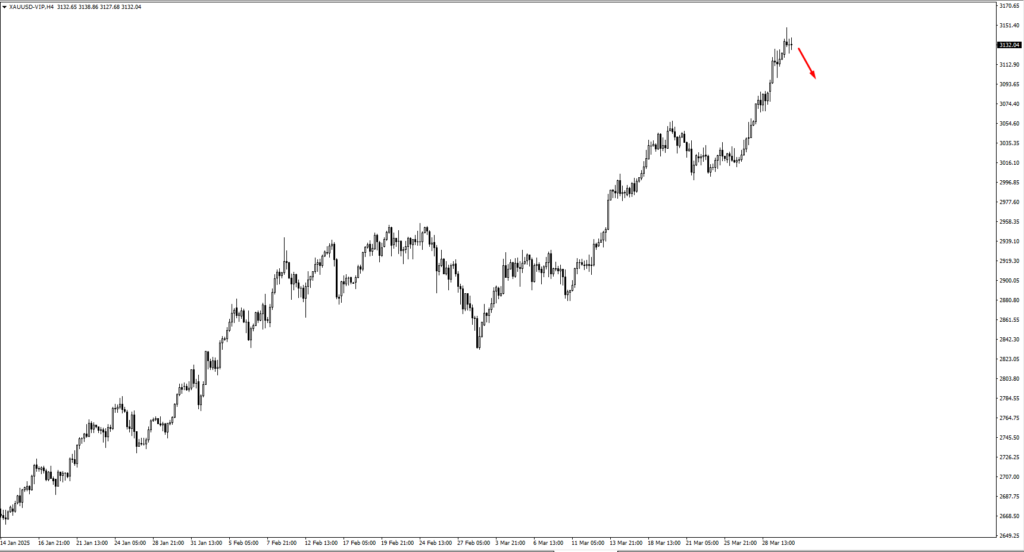
Gold has become the emotional barometer of the market, and price action reflects this. After pausing briefly near $3,080, gold now ranges just below $3,115. If tariffs arrive without exemptions, we expect a move toward $3,215. If the announcement disappoints hawks, gold may retrace—but downside appears limited for now. Bids remain firm on dips.
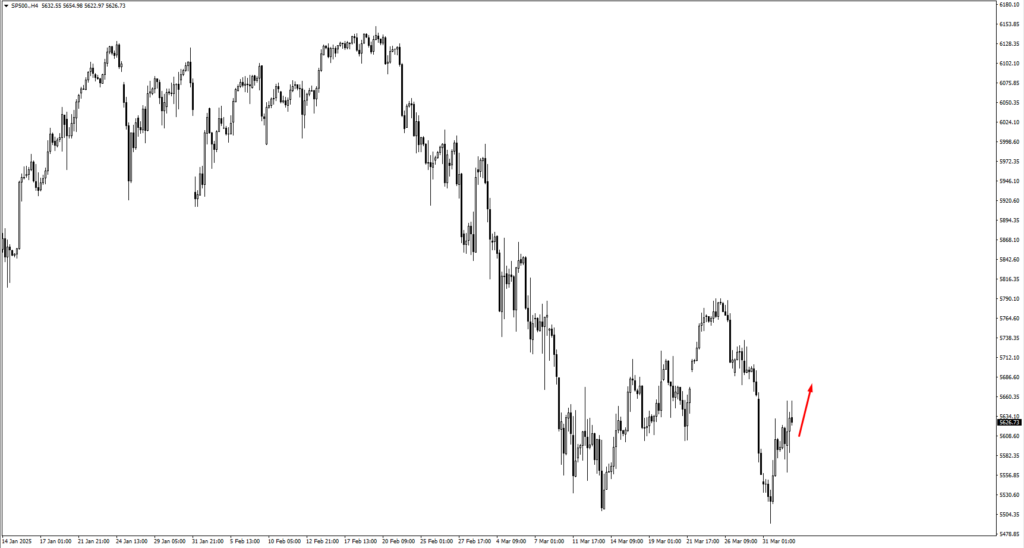
The S&P 500 remains vulnerable. After dropping from 5,830 and establishing a swing low, it staged a modest bounce. We’re watching for a retest of 5,680—but any renewed selling pressure could open the door to 5,400 or even 5,100, especially if tariffs exceed expectations and earnings guidance adjusts lower.
Nasdaq mirrored the S&P’s path—falling from 20,590, forming a new low, and now probing higher. The next test comes at 19,730. As one of the more globally exposed indices, the Nasdaq remains a litmus test for how tech traders are digesting trade policy risk.
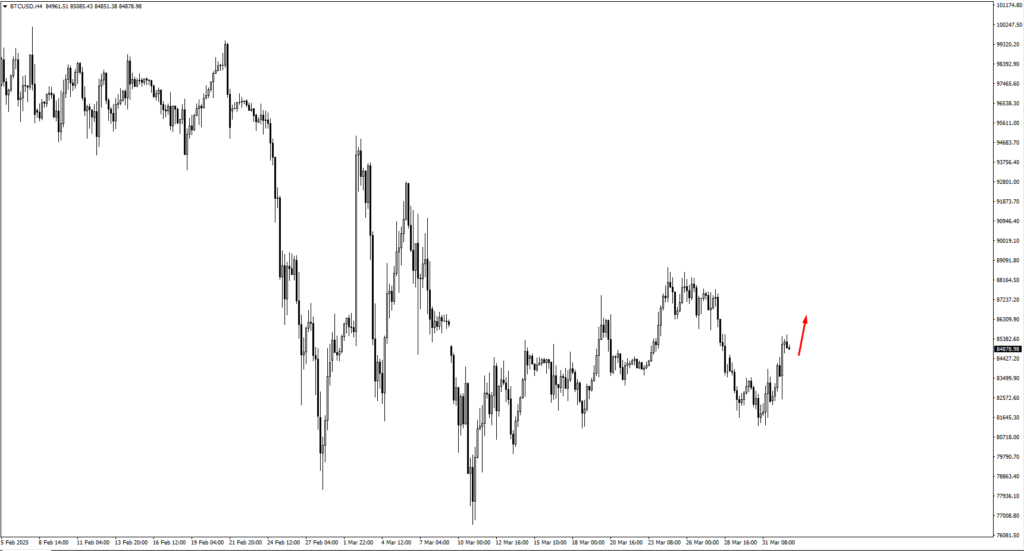
Bitcoin, ever volatile, is climbing erratically. Resistance is forming near 86,350, with support at 74,000. Price may spike higher on policy-induced fear, but we remain cautious in this zone. Ethereum is climbing from its recent 1,766.61 low and targeting 1,980. Should risk sentiment sour further, buyers may defend 1,700 or 1,650 as secondary levels.
We’ll continue monitoring for strong entry signals across all these zones. With volatility at the doorstep and policy uncertainty looming large, every level we’ve outlined could become a decision point before the week is out.
Key Events This Week
On Monday, March 31, we saw the release of Germany’s preliminary CPI. The forecast stood at 0.3%, down from the previous 0.4%, suggesting a slight easing of inflationary pressure. However, the market barely responded. EUR pairs traded sideways, holding tight to support and resistance as traders looked past the data and toward what would follow. With inflation still sticky across the continent and the European Central Bank maintaining a cautious tone, the data did little to shift sentiment. We treated price action as neutral here—marking zones, but holding off on directional trades until structure shifted more decisively.
Tuesday, April 1, brought a trio of risk events. The Reserve Bank of Australia’s cash rate remained unchanged at 4.10%, exactly as forecasted. The lack of surprise left AUDUSD meandering, with buyers stepping in near 0.6225 and eyeing the 0.6280 mark. As expected, price action was tight, more reactive than directional, and we held to our framework of watching for retracements before committing capital.
In the U.S., the ISM Manufacturing PMI came in at 49.6, falling below the previous 50.3 print. This dip below the 50-level confirms contraction in the manufacturing sector, a trend that aligns with other softening data points. Meanwhile, the JOLTS Job Openings held almost flat at 7.73 million, just shy of the prior 7.74 million. The labor market isn’t collapsing, but it isn’t expanding either. These numbers reinforced the idea that the U.S. economy is decelerating—not fast enough to justify urgent Fed cuts, but steady enough to fuel uncertainty in light of the tariff threat.
Wednesday, April 2, belongs entirely to the ADP Non-Farm Employment Change. The forecast calls for 118,000 new private-sector jobs—well above the previous 77,000 print. If the number surprises to the upside, markets may temporarily interpret it as resilience. But in this environment, strength in jobs doesn’t guarantee bullish price action. Traders are more concerned about inflation’s second wave, and tariffs could inject exactly that. A hot ADP print might lift yields momentarily, but the real movement will follow the White House’s announcement later tonight.
On Thursday, Switzerland’s CPI is expected to cool to 0.10% from 0.60%, which could extend recent CHF strength as volatility drives safe-haven flows. USDCHF is approaching the 0.8900 resistance level, and we’re watching for reaction there. The U.S. ISM Services PMI is also due, forecast at 53.0 versus 53.5 previously—a small drop, but one that could hint at softening consumer sentiment. If paired with aggressive tariff rhetoric, a weak print might stoke fears of a broader economic slowdown.
Finally, we close the week with Friday’s labor market blockbuster: Non-Farm Payrolls and Unemployment Rate. NFP is forecast at 139,000, down from 151,000, while the unemployment rate is expected to remain flat at 4.10%. These numbers won’t just reflect the economy—they’ll shape the Fed’s next steps. If job growth slows sharply and unemployment rises, the Fed will face pressure to shift dovish—even in the face of trade-induced inflation. If the labor market holds steady, the Fed stays pinned in place, stuck between an economy that’s cooling and a political climate pushing prices higher.







